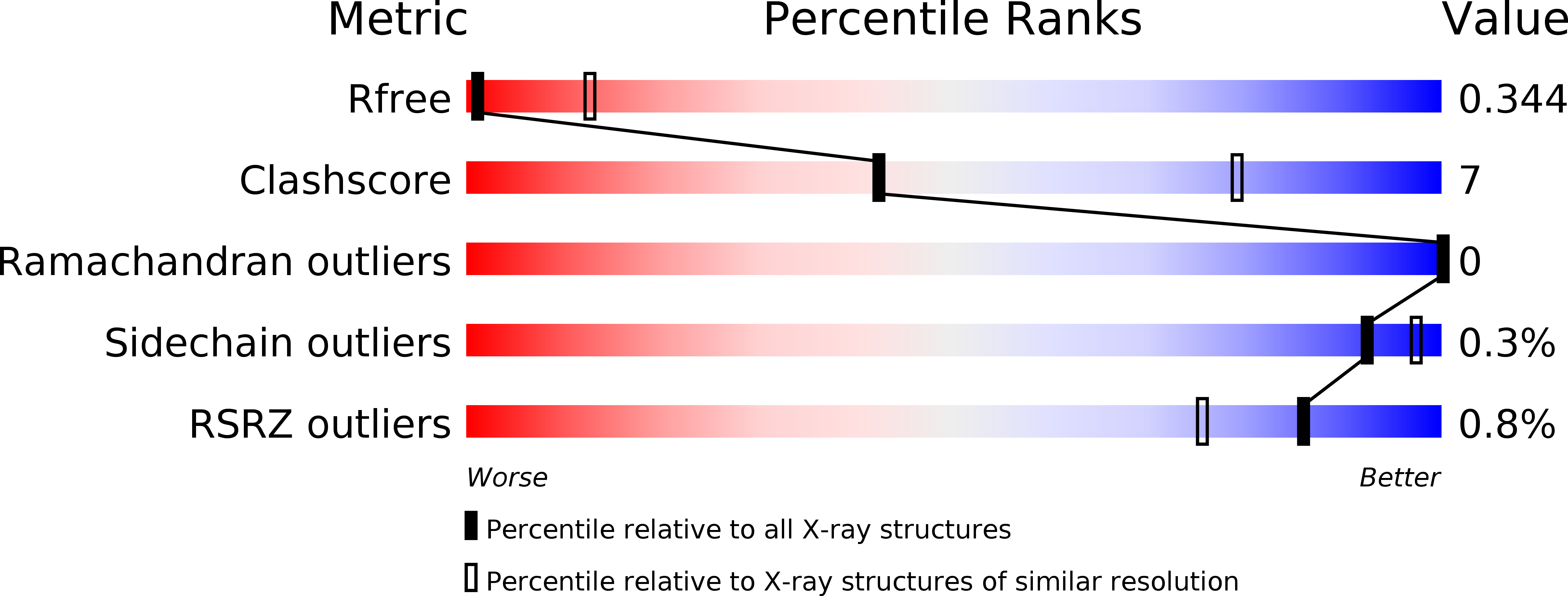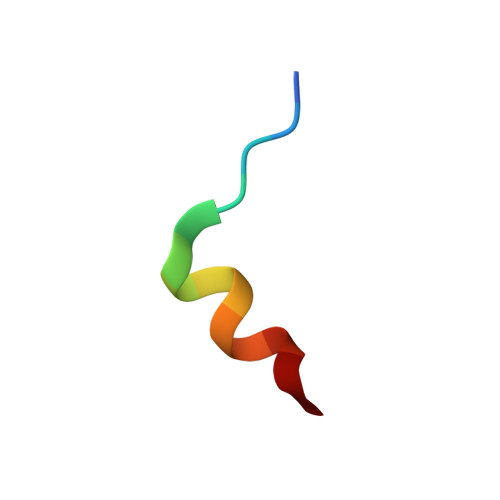Design of nucleotide-mimetic and non-nucleotide inhibitors of the translation initiation factor eIF4E: Synthesis, structural and functional characterisation.
Soukarieh, F., Nowicki, M.W., Bastide, A., Poyry, T., Jones, C., Dudek, K., Patwardhan, G., Meullenet, F., Oldham, N.J., Walkinshaw, M.D., Willis, A.E., Fischer, P.M.(2016) Eur J Med Chem 124: 200-217
- PubMed: 27592390
- DOI: https://doi.org/10.1016/j.ejmech.2016.08.047
- Primary Citation of Related Structures:
5EHC, 5EI3, 5EIR, 5EKV - PubMed Abstract:
Eukaryotic translation initiation factor 4E (eIF4E) is considered as the corner stone in the cap-dependent translation initiation machinery. Its role is to recruit mRNA to the ribosome through recognition of the 5'-terminal mRNA cap structure (m 7 GpppN, where G is guanosine, N is any nucleotide). eIF4E is implicated in cell transformation, tumourigenesis, and angiogenesis by facilitating translation of oncogenic mRNAs; it is thus regarded as an attractive anticancer drug target. We have used two approaches to design cap-binding inhibitors of eIF4E by modifying the N 7 -substituent of m 7 GMP and replacing the phosphate group with isosteres such as squaramides, sulfonamides, and tetrazoles, as well as by structure-based virtual screening aimed at identifying non-nucleotide cap-binding antagonists. Phosphomimetic nucleotide derivatives and highly ranking virtual hits were evaluated in a series of in vitro and cell-based assays to identify the first non-nucleotide eIF4E cap-binding inhibitor with activities in cell-based assays, N-[(5,6-dihydro-6-oxo-1,3-dioxolo[4,5-g]quinolin-7-yl)methyl]-N'-(2-methyl-propyl)-N-(phenyl-methyl)thiourea (14), including down-regulation of oncogenic proteins and suppression of RNA incorporation into polysomes. Although we did not observe cellular activity with any of our modified m 7 GMP phosphate isostere compounds, we obtained X-ray crystallography structures of three such compounds in complex with eIF4E, 5'-deoxy-5'-(1,2-dioxo-3-hydroxycyclobut-3-en-4-yl)amino-N 7 -methyl-guanosine (4a), N 7 -3-chlorobenzyl-5'-deoxy-5'-(1,2-dioxo-3-hydroxy-cyclobut-3-en-4-yl)amino-guanosine (4f), and N 7 -benzyl-5'-deoxy-5'-(trifluoromethyl-sulfamoyl)guanosine (7a). Collectively, the data we present on structure-based design of eIF4E cap-binding inhibitors should facilitate the optimisation of such compounds as potential anticancer agents.
Organizational Affiliation:
School of Pharmacy and Centre for Biomolecular Sciences, University of Nottingham, University Park, Nottingham NG7 2RD, UK.
















